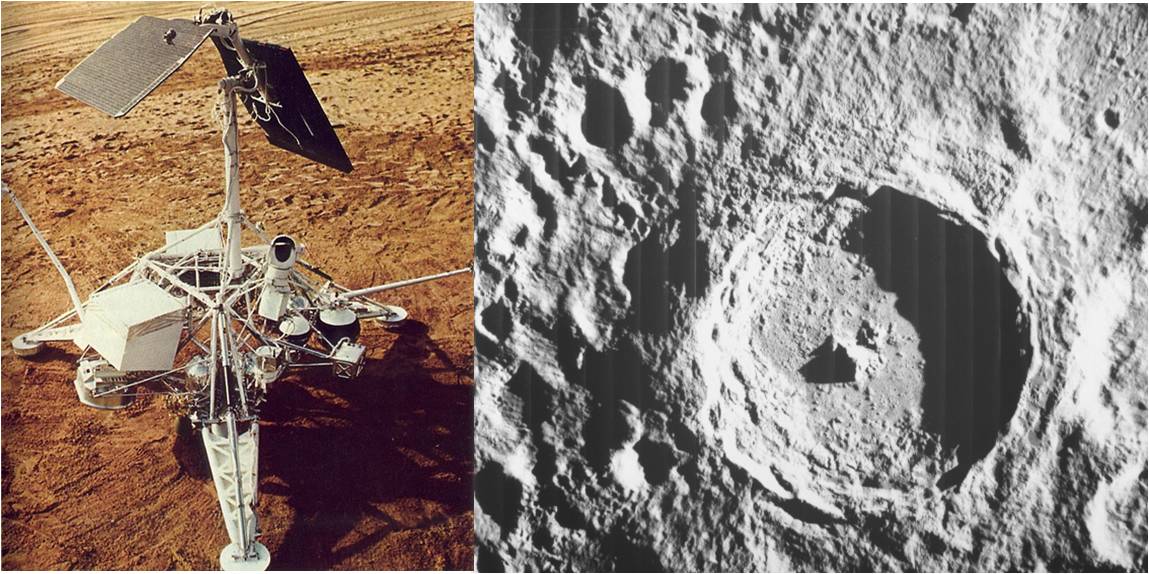Forty-two years ago this month, the Surveyor 7 spacecraft soft-landed in the lunar highlands near the Crater Tycho. It was the fifth and last Surveyor vehicle to successfully perform an autonomous landing on the Moon.
In preparation for the first manned lunar landing, the United States conducted an extensive investigation of the Moon using Ranger, Lunar Orbiter and Surveyor robotic spacecraft.
Ranger provided close-up photographs of the Moon starting at a distance of roughly 1,100 nautical miles above the lunar surface all the way to impact. Nine (9) Ranger missions were flown between 1961 and 1965. Only the last three (3) missions were successful.
Lunar Orbiter spacecraft mapped 99% of the lunar surface with a resolution of 200 feet or better. Five (5) Lunar Orbiter missions were flown between 1967 and 1968. All were successful.
Surveyor spacecraft were tasked with landing on the Moon and providing detailed photographic, geologic and environmental information about the lunar surface. Seven (7) Surveyor missions were flown between 1966 and 1968. Five (5) spacecraft successfully landed.
The Surveyor spacecraft weighed 2,300 lbs at lift-off and 674 lbs at landing. The 3-legged vehicle stood within a diameter of 15 feet and measured almost 11 feet in height. Surveyor was configured with a television camera, a surface sampler and an alpha-scattering instrument to determine the chemical composition of the lunar soil.
Surveyor 7 was launched from Kennedy Space Center’s Launch Complex 36A at 06:30:00.545 UTC on Sunday, 07 January 1968. The ride to the Moon was provided by a General Dynamics Atlas-Centaur launch vehicle. It took almost 68 hours to reach the Moon.
On Wednesday, 10 January 1968, Surveyor 7 successfully landed at 01:05:36 UTC on the lunar surface near the North Rim of Tycho Crater. A total of 20,993 photographs were taken during Surveyor 7’s first lunar day. By Friday, 26 January 1968, Surveyor 7 was powered-down for its first lunar night.
On Monday, 12 February 1968, Surveyor 7 was powered-up for its second lunar day of surface operations. The spacecraft took an additional 45 photographs and operated erratically for 9 earth-days. At 00:24 UTC on Wednesday, 21 February 1968, contact with Surveyor 7 was lost for the final time. By 06:48 UTC, the Surveyor 7 mission was officially terminated.
Although seldom remembered today, the Surveyor Program provided America with a wealth of lunar surface information critical to the Apollo Program. Surveyor’s success provided an added measure of confidence in the attainability of a manned lunar landing. Indeed, seventeen (17) months after Surveyor 7 fell silent, Astronauts Armstrong and Aldrin imprinted the lunar surface with their bootprints at Mare Tranquilitatis.

